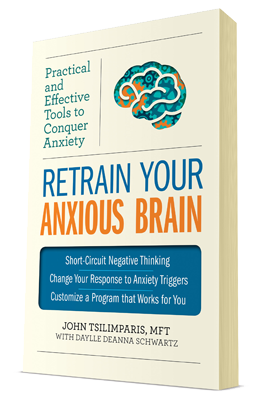Panic About “panic”
Individuals suffering from panic disorder are essentially “panicking” because of the symptoms caused by the adrenaline floating freely in the body. Basically, they are panicking about panic. The discomfort of the fight/flight response system acting up is so acute that it shakes them to the core. They do not realize at the time, that they are simply reacting to the specific physical symptoms they are having, like sweating, heart palpitations, shortness of breath, etc. Then, when the brain can no longer find a reason for the persistent symptoms experienced, it turns it inward and individuals start thinking that they are going mad and that they will die. They are reacting to feeling panicked because the stressor that may have caused the attack has passed or even more alarming, they are unable to identify a stressor at all.
It is common to believe that panic attacks occur out of the blue. However, it typically begins in a thought, a notion, a feeling, maybe even an unconscious process, that initially triggers a panic attack. In our work with panic attack patients, this pattern is always evident. A part of the treatment is then to figure out what these triggers are, become aware of them and prepare accordingly. Additionally, patients are taught to distinguish between feelings of discomfort, due to the adrenaline rush, and real danger. Is it discomfort or is it real danger?
People don’t just become panic attack sufferers overnight. They typically have a long history of being susceptible to anxiety and have experienced patterns of excessive worry and fear for many years prior.
Most panic attack sufferers possess the common feature of perfectionism and “all or nothing” thinking. Through cognitive restructuring, patients begin to accept they are nowhere near perfect and that lowering one’s standards does not mean settling for less. Patients must also accept they have an illness that in all likelihood, will stick around for a while.
For most, the onset of panic disorder is a blow to the ego, “I am not in control? I am not invulnerable?” They are afraid of the stigma connected to any condition or illness. Panic disorder is not an easy thing to share with people because usually people react in a naïve manner by saying things like, “relax,” and “don’t worry so much.” Patients are then left feeling inadequate because they have no control over the symptoms others are insensitively trivializing. It is like telling a raging alcoholic not to drink or a Tourettes disorder sufferer not to tic.
Most patients who suffer from panic disorder grew up in homes where emotions were not encouraged. They tend to have low self-esteem and have subtly hidden themselves from being self-expressed with people.
Panic disorder sufferers must talk about their symptoms and must not spend time with friends or relatives they are too afraid to reveal their panic to. This only perpetuates panic. The fear and worry over having another attack is typically reduced when it is out in the open. Panic disorder sufferers are known for initiating chaotic control strategies to try not to be discovered. Attempting to conceal it, feeds it. You cannot hide it.

